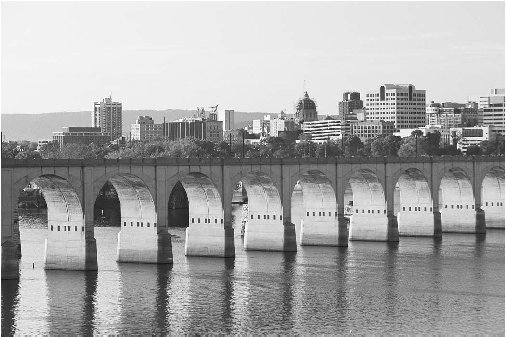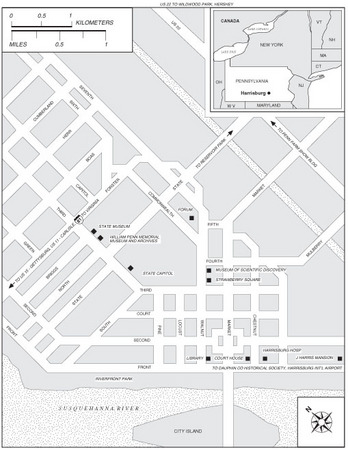Harrisburg
Harrisburg: Geography and Climate
Harrisburg: History
Harrisburg: Population Profile
Harrisburg: Municipal Government
Harrisburg: Economy
Harrisburg: Education and Research
Harrisburg: Health Care
Harrisburg: Recreation
Harrisburg: Convention Facilities
Harrisburg: Transportation
Harrisburg: Communications

The City in Brief
Founded: 1791 (incorporated as city, 1860)
Head Official: Mayor Stephen R. Reed (D) (since 1982)
City Population
1980: 53,264
1990: 52,376
2000: 48,950
2003 estimate: 48,322
Percent change, 1990–2000: -6.5%
U.S. rank in 1980: 447th
U.S. rank in 1990: 473rd
U.S. rank in 2000: Not reported (State rank: 17th)
Metropolitan Area Population
1980: 556,000
1990: 587,986
2000: 629,401
Percent change, 1990–2000: 7%
U.S. rank in 1980: 62nd
U.S. rank in 1990: 67th
U.S. rank in 2000: 66th
Area: 11.44 square miles (2000)
Elevation: Ranges from 100 to 358 feet above sea level
Average Annual Temperature: 52.9° F
Average Annual Precipitation: 40.5 inches of rain; 34.3 inches of snow
Major Economic Sectors: Manufacturing, services, retail trade, state government
Unemployment Rate: 3.6% (April 2005)
Per Capita Income: $15,787 (1999)
2002 FBI Crime Index Total: 2,928
Major Colleges and Universities: Harrisburg Area Community College, Penn State Downtown Center, Penn State Eastgate Center, Temple University at Harrisburg, Dixon University Center at Harrisburg
Daily Newspaper: The Patriot-News
